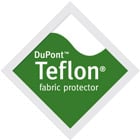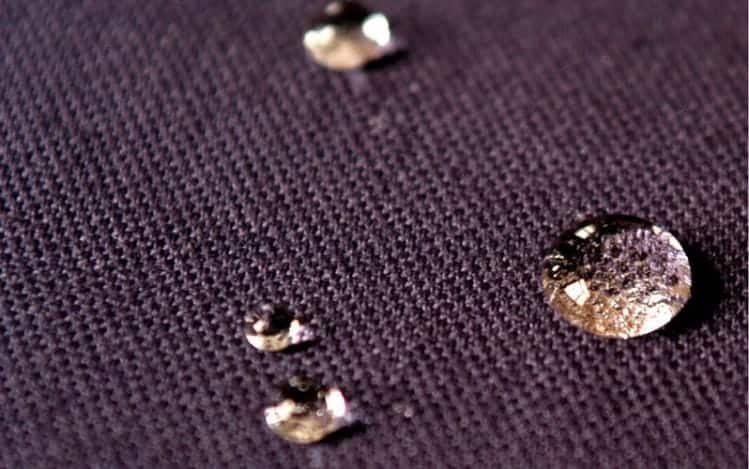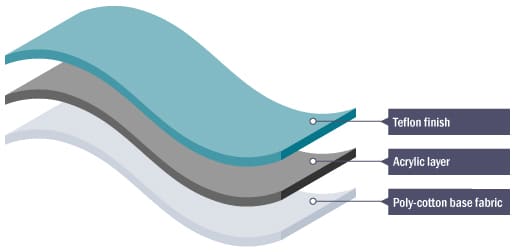What is Teflon®?

In its general meaning, Teflon is known to bring benefits such durability, easy cleaning, non-stick, and repellency. Frying pans is the most common domestic use which you might have seen it used for. Over the years the uses for Teflon have grown dramatically because of it’s versatility.
Teflon® Coated Tablecloths
Teflon fabric protector was designed to fight off common domestic stains such as liquid spillages, soil and dirt, making it hard to penetrate fabrics such as cotton, polyester, wool and other fabric blends whilst retaining the natural soft feel and weight of the fabric.
As dining and garden tablecloths are exposed to a harder wear, they have further protection to prolong the life and make it even easier to clean.
These fabrics are typically made from a poly-cotton base fabric (as opposed to 100% cotton which is harder to wash and iron), which is then coated with a thin acrylic layer and then treated with Teflon. The extra acrylic layer is what provides the additional toughness providing a better wipe clean surface.
Caring For Your Tablecloth
Caring for your Teflon cloth is pretty simple thanks for its technology. Follow these tips get the most out your tablecloths.
- Wipe clean any spillages or stain as soon as possible with clean damage sponge
- For oil-based stains use water with soap
- Wash infrequently at a maximum temperature of 40c
- Use detergent sparingly and rinse thoroughly
- Do not use bleach, fabric conditioner, tumble drying or dry cleaning
- After washing, ironing the back re-activates the stain repellent treatment.
- Tablecloths that are left in direct sunlight may result in fading to the fabric colour.
View the Teflon coated tablecloth range






